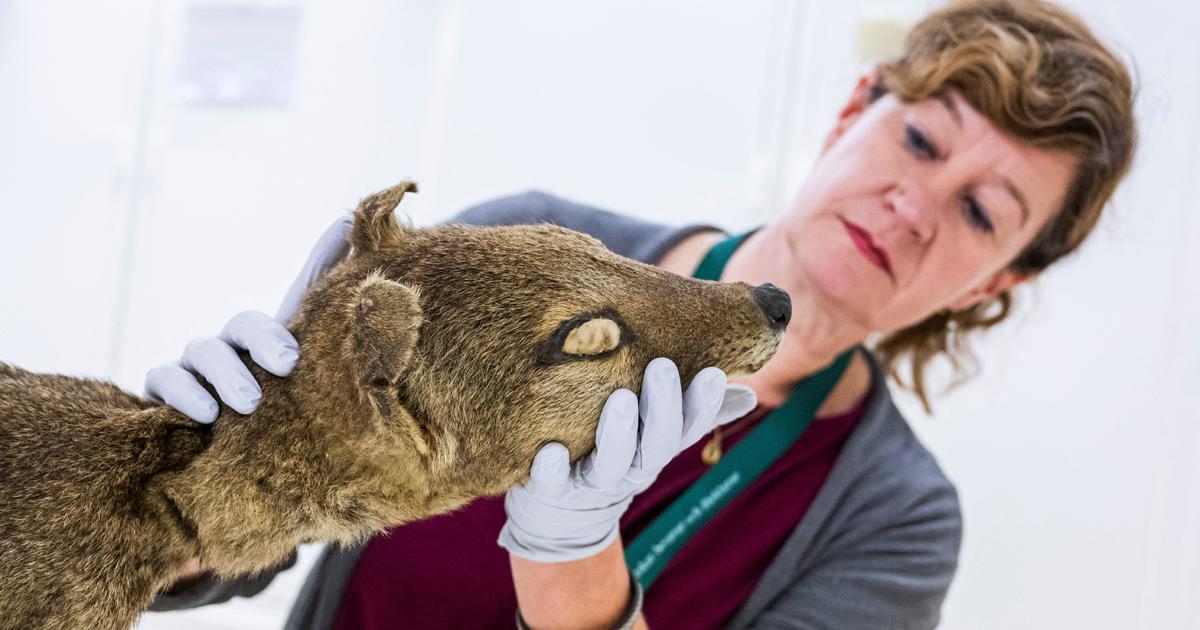Scientists Make Groundbreaking Discovery: Recover and Sequence RNA from Extinct Tasmanian Tiger
In a remarkable breakthrough, scientists have successfully recovered and sequenced RNA from an extinct species known as the Tasmanian tiger, according to a researcher from Stockholm University. This groundbreaking achievement raises hopes for the possible resurrection of animals that were once thought to be lost forever.
“The fact that we were able to accomplish this amazed many people who believed it couldn’t be done,” said Marc Friedländer, an associate professor in molecular biology at Stockholm University, in an interview with CBS News.
The project, co-led by Love Dalen, a professor of evolutionary genomics at Stockholm University, marks the first time that RNA has been extracted and sequenced from an extinct species.
“Recovering RNA from extinct species is a significant step towards potentially resurrecting extinct animals in the future,” Dalen stated optimistically.
Dalen and his team achieved this groundbreaking feat by sequencing RNA molecules from a 130-year-old Tasmanian tiger specimen that had been preserved at room temperature in Sweden’s Museum of Natural History.
Through their groundbreaking research, Dalen and his team were able to reconstruct RNA from the skin and skeletal muscle of the Tasmanian tiger.
RNA is a crucial molecule that conveys genetic information from the genome to the rest of the cell, instructing it on various functions. Dalen emphasized the importance of understanding both DNA and RNA for the potential resurrection of extinct animals.
Friedländer explained why this breakthrough is so significant, stating, “While DNA is stable and well-preserved over millions of years, RNA is highly transient and easily destroyed. Therefore, our ability to recover and study RNA from extinct animals is a proof of concept.” He further added that RNA can provide insights that DNA alone cannot uncover.
“By extracting DNA from an extinct animal, we can identify the genes present, but by obtaining RNA, we can understand the active genes and their roles in different tissues, which adds a whole new dimension of information,” Friedländer elaborated.
Furthermore, Friedländer revealed that their research led to the discovery of previously unknown genes that would not have been detected through DNA analysis alone.
The last known living Tasmanian tiger, also known as thylacine, died in captivity at the Beaumaris Zoo in Tasmania in 1936. The species was declared a pest after European colonization of Australia, and a bounty was offered for killing each fully grown animal in 1888.
Scientists have concentrated their efforts on the de-extinction of the Tasmanian tiger due to the preservation of its natural habitat in Tasmania.
Friedländer acknowledged the ethical considerations of resurrecting extinct species, saying, “In the case of the Tasmanian tiger, humans brought about their extinction not long ago, so in a way, we would be rectifying our own interference.”
Groundbreaking Research Sheds Light on Pandemics
Daniela Kalthoff, who oversees the mammal collection at the Museum of Natural History, expressed excitement at the prospect of resurrecting the Tasmanian tiger, calling it a “fantastic animal.” She demonstrated the black-and-brown striped skin that was used in the study.
In addition to its implications for extinct species, this research has significant relevance to the study of RNA viruses that cause pandemics.
“Many past pandemics, including the recent coronavirus and the Spanish flu, were caused by RNA viruses. By searching for these viruses in preserved wild animal remains found in museums, we can gain valuable insights into the nature and origins of pandemics,” explained Dalen.
This study opens up new possibilities for utilizing museum collections in the study of RNA. Dalen noted, “There are millions and millions of dried skins, tissues, and specimens of insects, mammals, and birds in museums across the globe. Now, we can potentially recover RNA from all these specimens.”
Denial of responsibility! Vigour Times is an automatic aggregator of Global media. In each content, the hyperlink to the primary source is specified. All trademarks belong to their rightful owners, and all materials to their authors. For any complaint, please reach us at – [email protected]. We will take necessary action within 24 hours.



